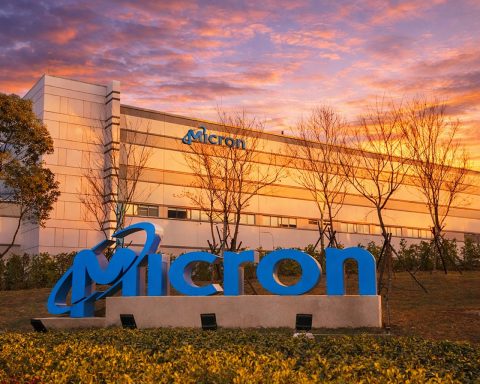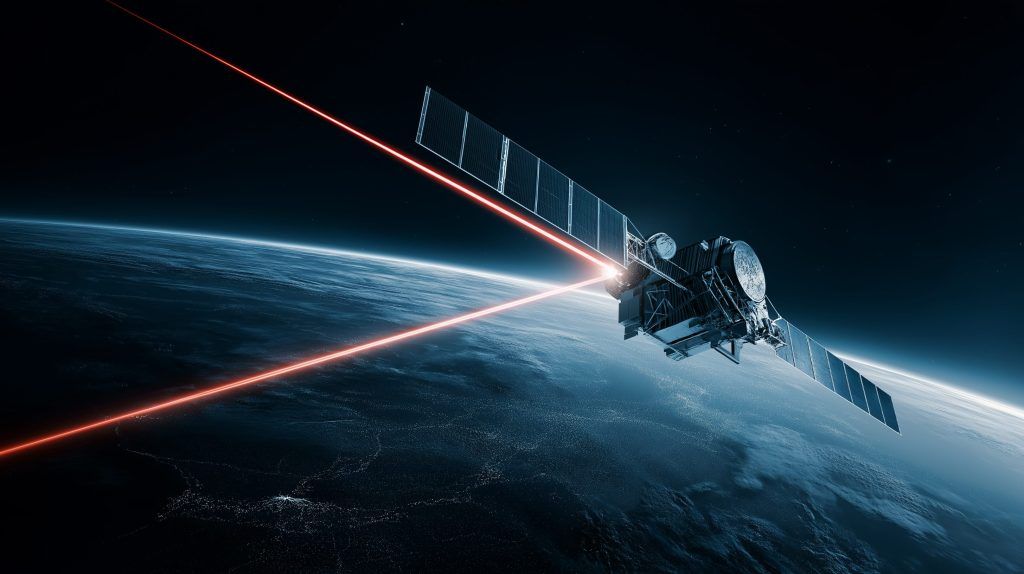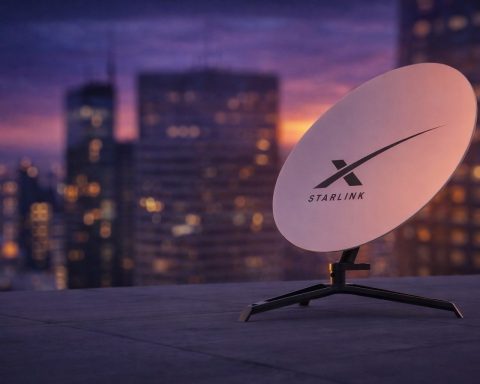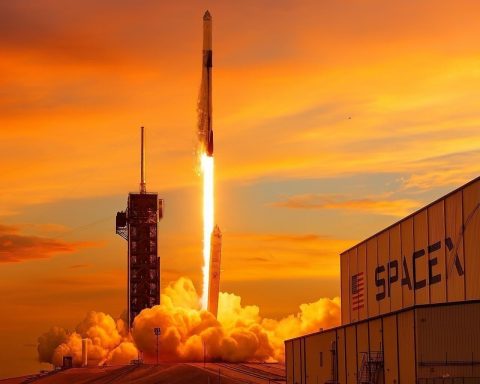- SpaceX conducted back-to-back Falcon 9 Starlink launches within 24 hours: July 26 from Cape Canaveral with 28 satellites and July 27 from California with 24 satellites, pushing the active Starlink constellation to 8,032.
- Crew-11 astronauts Zena Cardman, Mike Fincke, Kimiya Yui and Oleg Platonov are set to launch on July 31 aboard Dragon Endeavour to the ISS.
- Europe’s Vega C VV27 mission from Guiana Space Centre on July 25 placed four CO3D satellites into a 495 km sun-synchronous orbit and deployed CNES’s MicroCarb to a 650 km orbit.
- China unveiled Tianwen-3 Mars sample-return mission planned for a 2028 launch, aiming to collect at least 500 grams of Martian samples and return them to Earth by 2031 via a lander, an orbiter and a return vehicle.
- China launched SatNet LEO Group 05 on a modified Long March-6A from Taiyuan at 6:03 p.m. Beijing time on July 27, deploying the fifth batch of Guowang LEO broadband satellites and marking the 585th Long March flight.
- Gilmour Space Technologies aims for Eris-1’s July 28 orbital flight from Bowen, Queensland, using a 25 m three-stage hybrid rocket with Sirius engines to place about 215 kg into a 500 km orbit, representing Australia’s first indigenous orbital launch since 1971.
- NISAR will launch July 30 from Sriharikota on ISRO’s GSLV F16 (Mark II) into a 743 km sun-synchronous orbit, carrying NASA’s L-band and ISRO’s S-band radars on a 2,800 kg satellite, with a roughly $1.5 billion price tag and a 90-day commissioning.
- Russia’s Soyuz-2.1b/Fregat launched from Vostochny on July 25 deploying Iran’s Nahid-2 110 kg telecom satellite into a 500 km orbit, along with two Roscosmos Ionosphere-M satellites and 17 Russian CubeSats.
- Arianespace’s VV27 mission marked Vega C’s return to flight after an 18-month grounding and delivered five satellites, highlighting Europe’s ongoing Earth-observation program.
- The Australian Space Agency awarded Gilmour Space a $5 million grant to accelerate development of next-generation Sirius engines.
It was a whirlwind weekend in space. Over just 48 hours, rockets roared off launchpads across the globe and bold new missions were unveiled. SpaceX pulled off back-to-back Falcon 9 launches to expand its Starlink internet constellation, while astronauts from three nations arrived in Florida to prepare for a flight to the International Space Station. Europe’s Vega rocket returned to flight with a climate-focused payload, and China revealed ambitious plans to fetch rocks from Mars. Not to be outdone, China also launched a fresh batch of broadband satellites, and Australia geared up for a historic first orbital launch on its home soil. Meanwhile, India and the U.S. readied a groundbreaking Earth-observation satellite, and Russia lofted an Iranian communications satellite – underscoring space’s increasingly global tapestry. Below is a detailed roundup of all the significant satellite and space news from July 27–28, 2025, complete with expert quotes and key technical highlights.
SpaceX’s Starlink Doubleheader Shatters Launch Records
SpaceX notched two Falcon 9 launches in under 24 hours to boost its Starlink broadband network. In the predawn hours of July 26, a Falcon 9 lifted off from Cape Canaveral carrying 28 Starlink satellites, followed by another Falcon 9 launch from California just after midnight on July 27 with 24 more satellites [1]. The rapid-fire missions – one from each U.S. coast – underscore SpaceX’s breakneck launch cadence in 2025 and pushed the active Starlink satellite count above 8,000 for the first time [2]. “SpaceX will remedy [the] root cause to ensure it doesn’t happen again,” CEO Elon Musk pledged after a brief Starlink service outage earlier in the week, emphasizing the company’s commitment to reliability [3] [4]. Sunday morning’s Starlink launch was SpaceX’s 95th mission of 2025 (and the 520th since 2008) [5], illustrating an unprecedented tempo made possible by reusable rockets.
- Back-to-Back Launches: A July 26 mission from Florida (Starlink 10-26) and a July 27 mission from California (Starlink 17-2) marked SpaceX’s second launch in under 24 hours, demonstrating the company’s ability to turn around rockets quickly for consecutive flights [6]. This “doubleheader” approach is becoming a hallmark of SpaceX’s operations.
- Booster Reuse Milestone: The first-stage booster on the Florida launch (tail number B1078) flew for the 22nd time – a record – and landed safely at sea eight minutes later [7]. This touchdown was the 480th successful Falcon 9 booster recovery, underscoring how reusability is enabling such frequent launch attempts [8]. (Its prior flights even included a crewed mission, Crew-6.) The California launch’s booster (B1075) completed its 19th flight and also landed on a droneship [9], highlighting SpaceX’s routine of recycling hardware.
- Starlink Constellation Growth: With these launches, Starlink satellites in orbit now number 8,032 [10], extending service coverage. Just days earlier, SpaceX’s network experienced a rare global outage on July 24, which was resolved within hours after software fixes [11] [12]. Despite that hiccup, the constellation’s expansion continues unabated. SpaceX’s president of Starlink Engineering, Michael Nicolls, assured users the team is “deeply committed to providing a highly reliable network” and has identified the software issue to prevent a repeat [13].
- Competition in Orbit: Rival players are stepping up as well. Amazon announced a $139.5 million investment in new Florida facilities to ramp up launches for its Project Kuiper internet satellites [14]. The tech giant has already launched three batches of Kuiper prototypes on two different rockets in under three months, and says the next set of satellites is on standby for liftoff (launch date TBD) [15]. This signals Amazon’s determination to accelerate deployment of its Starlink competitor constellation.
New Crew Heads to Space: Crew-11 Astronauts Arrive for Launch
The next quartet bound for the International Space Station touched down at Kennedy Space Center in Florida, ready to begin final prep for SpaceX’s Crew-11 mission. Stepping off a NASA jet into steamy summer air on July 26 were NASA astronauts Zena Cardman and Mike Fincke, Japan’s Kimiya Yui, and Roscosmos cosmonaut Oleg Platonov [16] [17]. Commander Cardman – a first-time space flier – said arriving at the former Shuttle Landing Facility “is the first moment that it’s really starting to feel real” that she’s headed to orbit [18]. This international crew is slated to launch July 31 aboard the Dragon capsule Endeavour (making its record sixth flight), and they’ve just completed a Flight Readiness Review clearing the way for liftoff at 12:09 p.m. EDT from pad 39A [19]. Veteran astronaut Mike Fincke, preparing for his fourth mission, praised his teammates: “I’ve been on different crews before, but this one is exceptional,” he said, adding that he’s excited to see the fully built ISS that he helped construct years ago [20].
- Crew Composition: Crew-11 continues the tradition of mixing veteran spacefarers with rookies [21]. The four-person team consists of:
- Zena Cardman (NASA, Commander) – First spaceflight. A microbiologist by training, Cardman will be the first woman to command a Dragon on her maiden flight. “For me personally as a first time flier… things feel progressively more real as we approach our launch,” Cardman said of the experience [22].
- Mike Fincke (NASA, Pilot) – Fourth spaceflight. A veteran of two Space Shuttle missions and a long-duration ISS stay, Fincke brings decades of experience. “I’m personally looking forward to going back up to the space station. I helped build it and now I get to see it in its full maturity,” he noted [23].
- Kimiya Yui (JAXA, Mission Specialist) – Second spaceflight. Yui previously flew to the ISS in 2015 and was originally training for Boeing’s Starliner program [24]. He’s eager to conduct new experiments in orbit, and looks forward to an unexpected reunion – his best friend, fellow Japanese astronaut Takuya Onishi, is currently on the ISS from Crew-10 [25].
- Oleg Platonov (Roscosmos, Mission Specialist) – First spaceflight. Platonov will be the lone cosmonaut on Crew-11 and one of two rookies on board [26] [27]. His addition reflects the ongoing Russia-U.S. crew swap agreement to fly each other’s astronauts.
- Mission & Spacecraft: Crew-11’s Dragon Endeavour is slated for a fast rendezvous and six-month mission at the ISS (which could extend to eight months depending on scheduling) [28]. They’ll join Expedition 73 upon arrival and overlap briefly with the outgoing Crew-10 to ensure a smooth handover [29]. The crew has already practiced a “dry dress” rehearsal in SpaceX’s suits, and a static fire of the Falcon 9 is set just before launch to verify all systems [30]. If launched on schedule, this mission will see the ISS through its 25th anniversary of continuous human occupancy later this year [31] – an occasion Cardman said it’s “so special to take part in” as the station marks a quarter-century in orbit [32].
- Crew Insights: Both Fincke and Yui were previously assigned to Boeing’s delayed Starliner program, but NASA reassigned them to SpaceX due to Starliner’s setbacks [33]. Fincke highlighted the positive side of this cross-training: “It’s really a privilege to know so many different spacecraft, and I’m very proud of our industry partners for building some really fine space-flying machines,” he said, praising SpaceX’s Dragon for its reliability (this will be Endeavour’s sixth flight) [34]. Yui, for his part, said he’s looking forward to working with international colleagues “all over the world” on science experiments and expects “a lot of fruitful results” from their time in orbit [35].
Europe’s Vega C Rocket Launches Earth-Observation Fleet
After sunset on July 25 in South America, a European Vega C rocket leapt from the Guiana Space Centre carrying a suite of Earth observation satellites into orbit. Arianespace confirmed that the VV27 mission was a complete success – placing five satellites into two different sun-synchronous orbits with precision [36] [37]. The primary payload was Airbus Defence and Space’s CO3D constellation, a set of four mini-satellites designed to map Earth in three dimensions at high resolution. Riding along was CNES’s MicroCarb, a pioneering climate-monitoring satellite that will track carbon dioxide sources and sinks worldwide. “VV27 is a great example of what our teams do best: delivering complex missions with precision,” Arianespace CEO David Cavaillolès said, noting that Vega C successfully deployed the four CO3D satellites and MicroCarb exactly as planned [38]. This marked the fifth Vega C launch to date [39], and a vital one for Europe’s space program as it works to rebound from previous Vega launch difficulties.
- Payloads & Purpose: The CO3D (Constellation Optique 3D) mission consists of four 285-kg class satellites that will work in tandem to produce a global 3D map of Earth’s surface with 50 cm resolution imagery [40]. Operated jointly by Airbus and the French space agency CNES, CO3D will serve both military and civilian needs – from precise cartography for defense to applications in hydrology, geology, urban planning and resource management [41]. The MicroCarb satellite, built by CNES with contributions from the UK and Airbus UK, carries a sophisticated spectrometer to measure atmospheric CO₂ levels. Its mission is to pinpoint carbon sources and sinks on a global scale, providing crucial data on greenhouse gas emissions and absorption [42] [43]. MicroCarb is expected to greatly aid climate scientists in understanding carbon cycles and informing policy.
- Launch Highlights: Vega C lifted off at 11:03 p.m. local time July 25 (02:03 UTC July 26) from Kourou, French Guiana [44]. About 54 minutes into flight, it released the four CO3D satellites into a 495 km orbit; then the upper stage reignited and carried MicroCarb to a higher 650 km orbit, deploying it 1 hour 41 minutes after launch [45]. Successfully dropping off payloads at two different altitudes showcased Vega C’s upgraded capability over its Vega predecessor. The mission also marked Arianespace’s 354th launch overall, and notably 10% of all satellites ever launched by Arianespace have been Earth-observation spacecraft – underlining Europe’s strong role in environmental monitoring from space [46].
- ESA’s Comeback & Next Steps: This flight was closely watched because Vega C had been grounded for nearly 18 months following a launch failure in late 2022. Its return to service with a flawless mission is a relief for European space officials working to provide independent access to orbit. Alongside Vega C, Europe is gearing up for the debut of the new heavy-lift Ariane 6 rocket (a briefing was held July 28 on the upcoming MetOp-SG-A1 weather satellite launch [47]). The success of VV27 also benefits international partners – for example, MicroCarb’s data will be shared with NASA to complement the U.S. OCO-2 carbon observatory, and CO3D’s 3D maps will be available to institutions worldwide. Arianespace emphasized that enabling such missions “further[s] our understanding of the Earth” while ensuring Europe’s autonomous access to space for critical science goals [48] [49].
China Outlines Ambitious Tianwen-3 Mars Sample-Return Mission
In a major announcement for planetary science, China’s space agency unveiled new details of its first Mars sample-return mission, Tianwen-3, targeting launch in 2028. The mission’s chief scientist, Hou Zengqian, revealed that Tianwen-3 aims to collect at least 500 grams of Martian samples and bring them to Earth by 2031 [50]. “The mission will be a critical step in China’s planetary exploration. We hope to provide the international community with an unprecedented opportunity to understand Mars,” Hou said [51]. If successful, Tianwen-3 would make China only the second nation (after the U.S., which is collaborating with Europe on Mars sample return) to retrieve material from the Red Planet – and it plans to do so in a single, complex mission rather than multiple launches. The mission architecture involves two launches around 2028: one dispatching a lander to Mars and another sending an orbiter/Earth-return vehicle. The spacecraft will take 7–8 months to cruise to Mars, spend about 1 year collecting samples, then launch off the Martian surface and head back, with the whole round-trip lasting ~3 years [52].
- Hunt for Ancient Life: A driving motivation for Tianwen-3 is the age-old question of life on Mars. “We aim to unravel the mystery of whether life ever existed on Mars,” Hou said, outlining the mission’s three science goals: search for possible biosignatures (past life indicators like biomarkers or microfossils), study how Mars’ habitability evolved (e.g. past water, climate and atmospheric changes), and investigate Mars’ geology from surface to core [53] [54]. These objectives are intertwined – as Hou explained, habitability depends on geological processes, and the presence or absence of life is tied to environmental conditions [55]. The sample analyses could therefore shed light on Mars’ ancient environment and whether it was ever conducive to life.
- Innovative Sample Collection: Tianwen-3 will employ three sampling methods to maximize scientific return: surface scoops, 2-meter-deep drilling, and a robotic drone to grab material beyond the lander’s reach [56] [57]. Notably, this would be the first Mars mission in the world to drill 2 m into the subsurface for samples [58], far exceeding the few centimeters depth of NASA’s Perseverance rover cores. The mission will not carry a rover; instead, a powered drone (akin to a small helicopter) will fly out hundreds of meters to collect additional samples and return them to the lander [59]. By combining shallow scoops, deep drill cores, and aerially retrieved samples, scientists hope to obtain a diverse collection – potentially including underground material shielded from radiation (ideal for bio-signature preservation) and rock from multiple sites.
- Planetary Protection & Collaboration: Chinese officials stressed that strict planetary protection measures will be in place [60]. The spacecraft and sampling tools must avoid contaminating Mars with Earth microbes, and the return capsule must securely contain Mars material to prevent any unintended release on Earth. “Strict measures are required to prevent the contamination of Mars by the spacecraft and the potential contamination of Earth’s biosphere by Martian samples,” Hou emphasized, noting China will adhere to international COSPAR planetary protection protocols [61]. A high-security lab is being built in China to receive and analyze the Mars rocks under biosecure, ultra-clean conditions [62]. Importantly, China is inviting global participation in Tianwen-3: Hou described a “fully open and collaborative approach,” including international science workshops to set goals, a call for foreign instrument contributions, and a promise to share returned samples with researchers worldwide after ensuring safety [63] [64]. This openness suggests China seeks to make Tianwen-3 a worldwide endeavor in scientific discovery, much like the Apollo sample programs or NASA’s future Mars returns.
China Expands Orbital Internet Constellation with Long March Launch
On July 27, China added another “cluster” of satellites to its planned low-Earth-orbit internet megaconstellation. A modified Long March-6 rocket (sometimes referred to as Long March-6A) blasted off at 6:03 p.m. Beijing time from the Taiyuan Satellite Launch Center, carrying the fifth batch of LEO broadband satellites for China’s network [65]. The mission was declared fully successful, with all satellites deployed into their preset orbit [66]. This launch marks the 585th flight of a Long March series rocket [67] – a testament to China’s prolific launch rate. It also showcases China’s entry into the satellite internet race, deploying what is expected to be a vast constellation (often compared to SpaceX’s Starlink or Amazon’s Kuiper, though operated by Chinese state-owned enterprises).
- Mission Details: The launch (codenamed SatNet LEO Group 05 by some sources) lofted an unspecified number of satellites that will form part of China’s national low-orbit communications network. State media described it simply as a “new group” of LEO satellites, the fifth of its kind [68]. Previous groups in this series reportedly consisted of 5–13 satellites each, likely meaning a similar quantity for Group 05. They were carried to orbit by a Long March-6 variant equipped with strap-on solid boosters for extra lift (hence “modified” LM-6) [69]. All satellites were confirmed to have entered orbit successfully and begun operating.
- China’s Starlink Rival: These satellites are part of the planned “Guowang” constellation, China’s state-backed answer to Starlink, intended to provide global broadband coverage. The network is managed by China SatNet, a company tasked with deploying a network of 300+ satellites in low orbit. The July 27 launch brings China closer to an initial operational capability. It follows an earlier Group 04 launch in April, and more are slated to launch in quick succession (China has also tested internet satellites on Long March-8 and other vehicles). Once completed, this constellation will bolster connectivity in remote regions of China and offer services internationally – potentially in coordination with partner countries.
- Launch Milestone & Forthcoming Plans: The use of the Long March-6A variant is notable – it’s China’s first rocket to combine liquid-fueled core stages with solid boosters, enabling medium-lift performance. Its success on July 27 further validates the design. The launch’s numbering as the 585th Long March mission highlights how rapidly China is launching rockets; by comparison, the 500th Long March launch occurred only in 2021, indicating dozens of flights per year. Looking ahead, China’s launch manifest remains packed: within days of this mission, a Long March-7 is scheduled to loft a cargo ship to the Tiangong space station, and a Long March-8 is expected to deploy more internet satellites. China is also preparing the powerful Long March-5D/Y for a lunar sample-return test later in 2025. All told, the country is on track to exceed 60 launches this year, demonstrating space ambitions that extend from orbiting routers to Mars sample returns.
Australia’s First Homegrown Orbital Rocket Set for Historic Launch
Down under, a piece of space history is in the making. Gilmour Space Technologies, a private Australian rocket company, is poised to conduct the first orbital launch attempt from Australian soil by an Australian-built rocket [70]. The mission, dubbed “Eris Test Flight 1,” aims to lift off from Gilmour’s new Bowen Orbital Spaceport in Queensland during a launch window opening Monday, July 28 (21:30 UTC) [71]. If successful, it will be Australia’s first orbital launch in over 50 years [72] – the last was in 1971 when a British Black Arrow rocket launched from Woomera. The Eris rocket has faced several scrubs and delays in recent months (due to technical tweaks and weather), but Gilmour’s team is optimistic that this third attempt will be the charm. “We’ve replaced the fairing and mitigated the issue… now aiming for July 28,” the company noted, after a previous glitch caused a payload fairing separation during a wet dress rehearsal [73] [74]. Australia’s Space Agency is fully behind the effort – just days ago it awarded Gilmour a $5 million grant to accelerate development of next-gen rocket engines [75], underscoring national support for the budding launch sector.
- Rocket at a Glance:Eris-1 is a three-stage, 25 m tall rocket that uses an innovative hybrid propulsion system. Its first and second stages are powered by Gilmour’s proprietary Sirius hybrid engines, which burn a combination of a 3D-printed solid fuel grain and liquid hydrogen peroxide oxidizer [76]. This design allows for simpler engine construction and potentially lower costs – and a successful orbital flight would be the first ever for a hybrid-propellant rocket [77] [78]. Eris can carry about 215 kg to a 500 km orbit [79], putting it in the small launch vehicle class (similar in size to Rocket Lab’s Electron, but with a bit more punch). Gilmour has built most components domestically – proudly stamping an “Australian-made” logo on the rocket – and uses 3D-printing extensively for engine parts [80] [81].
- Historic Spaceport: The Bowen Orbital Spaceport at Abbot Point is Australia’s first licensed orbital launch site [82]. Gilmour constructed the pad in cooperation with the traditional Indigenous landowners, and it officially opened in 2023 [83]. The site offers launch azimuths ranging 20 to 65 degrees inclination, enabling access to low- to mid-inclination orbits over the Coral Sea [84]. For this debut, Eris will fly on a northeasterly trajectory and attempt to reach a polar-ish low Earth orbit [85]. A successful flight would make Australia only the 7th nation to send satellites to orbit using an indigenously developed vehicle (joining an exclusive club behind the US, Russia, France/ESA, Japan, China, and India). It also signifies a renaissance of Aussie rocketry – coming 58 years after Australia’s first satellite (WRESAT) was launched in 1967.
- Outlook for Aussie Launch Industry: The outcome of Test Flight 1 is eagerly awaited by the Australian space industry. Gilmour has a second Eris rocket already in production, incorporating lessons from this test and aiming for higher performance [86]. The company also has plans for Eris Block 2, a future upgrade that would lift up to 1,000 kg to orbit, putting it on par with larger launchers and enabling rideshare missions [87]. Beyond Gilmour, other Aussie launch startups are on the horizon – companies like Southern Launch (with a site in South Australia) and Equatorial Launch Australia (in Arnhem Land, NT) are developing small orbital rockets or hosting foreign launches. Government backing is strong: “This will be the first Australian-made rocket to attempt orbit, and the country’s first orbital launch in over 50 years,” the Australian Space Agency noted, highlighting the milestone [88]. A successful Eris flight could open the floodgates for Australia’s commercial space aspirations, from launching small sats for Asia-Pacific customers to eventually contributing to international missions (the government’s stated goal is to triple the size of the space sector by 2030). For now, all eyes are on Bowen as the countdown ticks toward a historic liftoff.
ISRO & NASA Ready NISAR Earth Satellite for Launch
A landmark US-India space collaboration is nearing fruition: the NISAR Earth observation satellite is set to launch on July 30 from Sriharikota, India [89]. Short for NASA-ISRO Synthetic Aperture Radar, NISAR is the first joint Earth science mission by the Indian Space Research Organisation (ISRO) and NASA. It will be lofted by ISRO’s GSLV F16 rocket into a 743 km polar orbit [90], where NISAR’s advanced radars will scan our planet to provide an unprecedented look at environmental changes. Officials have called this mission a “key milestone” in remote sensing technology [91]. By combining two frequency bands (L-band and S-band) in one platform, NISAR will be able to penetrate through vegetation and shallow ground layers, mapping the entire globe every 12 days with consistent, high-resolution imagery [92]. The satellite’s data is expected to revolutionize how we monitor climate change, natural disasters, and ecosystem dynamics – a true 360-degree view of Earth’s pulse.
- Launch Plans: NISAR’s launch is scheduled for July 30 at 5:40 p.m. IST (8:10 a.m. EDT) from Satish Dhawan Space Centre’s Second Launch Pad [93]. It will ride atop India’s Geosynchronous Satellite Launch Vehicle (GSLV) Mark II, which has been upgraded and designated F16 for this mission. The roughly 2,800 kg satellite will be placed into a sun-synchronous polar orbit at ~743 km altitude [94]. NASA is providing live coverage of the event and has shipped over an American Deep Space Network antenna to help receive NISAR’s signals. The mission has seen remarkable cooperation: the satellite’s dual radar payload – one built by NASA (L-band) and one by ISRO (S-band) – was integrated together in the U.S., then flown to India in early 2024 for final assembly onto the spacecraft.
- Mission Objectives: Once in orbit, NISAR will begin a 90-day commissioning phase to check out its instruments [95]. Then it will start its science operations, using two large mesh radar antennas to sweep the planet. The satellite will map Earth’s entire land and ice surfaces every 12 days [96], gathering a treasure trove of data on how our planet is changing. Scientists will use NISAR to measure changes in biomass (forests and vegetation), monitor glacier and ice-sheet dynamics in Greenland/Antarctica, track sea level rise, and detect subtle shifts in land surfaces that could signal natural hazards [97] [98]. For example, NISAR can spot precursor signs of earthquakes (like ground deformation along fault lines), monitor active volcanoes for swelling, and map flood or landslide-prone regions before and after events. It will also provide continuous data on crop extent and wetlands health, supporting resource management. By combining L-band and S-band synthetic aperture radar, NISAR achieves a level of detail and dual-depth sensing not previously available from orbit [99]. This joint mission exemplifies the synergy of U.S. and Indian expertise – NASA brings experience from missions like Seasat and SMAP, while ISRO contributes its proven radar imaging technology (building on missions like RISAT). Both agencies will share NISAR’s data freely with the global scientific community.
- Significance: NISAR represents a diplomatic high point in U.S.-India space cooperation. It’s the costliest satellite ever built by India (roughly $1.5 billion) and NASA’s biggest collaboration with ISRO to date. The mission was conceived in 2014 and overcame technical and pandemic delays to reach the launch pad. “The launch of NISAR will mark a key milestone in Earth observation technology,” noted an ISRO official [100], emphasizing how the mission’s outcomes could benefit climate research and disaster preparedness worldwide. Beyond the science, NISAR also paves the way for future collaborations – for instance, NASA and ISRO have discussed jointly developing lunar rovers and even cooperating on astronaut missions. But for now, all attention is on Sriharikota, as NISAR stands ready to beam back an unprecedented stream of insights about our ever-changing Earth.
Russian Soyuz Launches Iranian Satellite, Showcasing Partnership
In a reminder of the global nature of space activity, Russia conducted a Soyuz launch on July 25 carrying multiple satellites – including an Iranian communications satellite – into orbit. The mission lifted off from the Vostochny Cosmodrome in Russia’s Far East and successfully deployed Iran’s “Nahid-2” telecom satellite, along with several Russian satellites, on Friday (July 25) [101]. Officials hailed the launch as highlighting the “strong ties” between Moscow and Tehran [102], as space cooperation deepens alongside broader strategic links. The 110-kg Nahid-2 is now circling Earth in a 500 km orbit and is designed to operate for at least two years, providing Iran with enhanced communications capabilities [103]. This is Iran’s third satellite launched by Russia in recent years (earlier, Iran’s Khayyam imaging satellite was orbited by a Soyuz in 2022). The latest mission also included two Russian Ionosphere-M science satellites to study the ionospheric plasma, and 17 smaller Russian CubeSats for various technological and educational purposes [104].
- Mission Breakdown: A Soyuz-2.1b rocket, topped with a Fregat upper stage, carried out the multi-payload launch. After a timely liftoff from Vostochny, the Fregat stage performed a series of burns to place each satellite into its proper orbit. The headline passenger, Nahid-2, is a communications satellite for the Iranian Space Agency – likely to be used for low-bandwidth communication services and technology demonstration. It was inserted into a low Earth orbit inclined around 55° and will be gradually positioned for its operations. According to Iranian media, Nahid-2 features an deployable solar array and C-band transponders to relay communications. Its successful deployment is a win for Iran’s nascent space program, which has faced Western sanctions and technical hurdles; partnering with Russia has given it an alternative route to space access.
- Secondary Payloads: Along for the ride were two Ionosphere-M satellites for Roscosmos. These are part of a Russian scientific project to monitor the Earth’s ionosphere (the upper atmosphere layer that affects radio communications and GPS signals). By measuring plasma fluctuations, these satellites could help in studying space weather effects. Additionally, a cluster of 17 small satellites – likely CubeSats developed by Russian universities and institutes – were released [105]. These nanosatellites cover experiments from Earth imaging and ship tracking to radiation measurement and tech demos. The large number of rideshare payloads showcases Russia’s use of Soyuz with Fregat as a workhorse for orbiting diverse spacecraft together.
- Geopolitical Context: This launch underlines increasing Russia-Iran cooperation in space amid international sanctions. In January, the two countries signed a “strategic partnership” agreement covering space among other sectors [106]. Russian President Vladimir Putin has also floated the idea of jointly building navigation or remote sensing satellites with Iran. For Iran, getting its satellites launched by Russia provides a crucial lifeline as U.S. pressure has at times limited Tehran’s access to launch technology. The West is watching these developments warily – especially after reports that Iran’s satellites could potentially serve dual uses (civil and military). In the July 25 launch, Russia carefully noted that the partnership treaty with Iran does not involve military aid and that Nahid-2 is a civilian satellite [107]. Still, the symbolism was strong: as Russia’s Soyuz thundered skyward with Iran’s satellite on board, it sent a message of defiance to those who would isolate either nation from the space arena. The mission was Russia’s 12th orbital launch of 2025, and it marked the 585th flight of the venerable Soyuz rocket family, further extending Soyuz’s record as the most-flown rocket in history.
Sources: Official press releases, news articles, and agency reports were used to compile this roundup. Key information and quotes were drawn from Space.com [108] [109], Spaceflight Now [110] [111], Arianespace [112] [113], Xinhua News [114] [115], the Australian Space Agency [116], Hindustan Times [117] [118], SatNews [119] [120], and other primary sources to ensure accuracy and timeliness. All developments are as of July 28, 2025. [121] [122]
References
1. www.space.com, 2. www.space.com, 3. spaceflightnow.com, 4. spaceflightnow.com, 5. www.space.com, 6. www.space.com, 7. spaceflightnow.com, 8. spaceflightnow.com, 9. www.space.com, 10. www.space.com, 11. spaceflightnow.com, 12. spaceflightnow.com, 13. spaceflightnow.com, 14. spaceflightnow.com, 15. spaceflightnow.com, 16. spaceflightnow.com, 17. spaceflightnow.com, 18. spaceflightnow.com, 19. spaceflightnow.com, 20. spaceflightnow.com, 21. spaceflightnow.com, 22. spaceflightnow.com, 23. spaceflightnow.com, 24. spaceflightnow.com, 25. spaceflightnow.com, 26. spaceflightnow.com, 27. spaceflightnow.com, 28. spaceflightnow.com, 29. spaceflightnow.com, 30. spaceflightnow.com, 31. spaceflightnow.com, 32. spaceflightnow.com, 33. spaceflightnow.com, 34. spaceflightnow.com, 35. spaceflightnow.com, 36. newsroom.arianespace.com, 37. newsroom.arianespace.com, 38. newsroom.arianespace.com, 39. newsroom.arianespace.com, 40. newsroom.arianespace.com, 41. newsroom.arianespace.com, 42. newsroom.arianespace.com, 43. newsroom.arianespace.com, 44. newsroom.arianespace.com, 45. newsroom.arianespace.com, 46. newsroom.arianespace.com, 47. spacepolicyonline.com, 48. newsroom.arianespace.com, 49. newsroom.arianespace.com, 50. english.www.gov.cn, 51. english.www.gov.cn, 52. english.www.gov.cn, 53. english.www.gov.cn, 54. english.www.gov.cn, 55. english.www.gov.cn, 56. english.www.gov.cn, 57. english.www.gov.cn, 58. english.www.gov.cn, 59. english.www.gov.cn, 60. english.www.gov.cn, 61. english.www.gov.cn, 62. english.www.gov.cn, 63. english.www.gov.cn, 64. english.www.gov.cn, 65. english.www.gov.cn, 66. english.www.gov.cn, 67. english.www.gov.cn, 68. english.www.gov.cn, 69. english.www.gov.cn, 70. www.space.gov.au, 71. www.nasaspaceflight.com, 72. www.space.gov.au, 73. www.nasaspaceflight.com, 74. www.nasaspaceflight.com, 75. www.space.gov.au, 76. www.nasaspaceflight.com, 77. www.nasaspaceflight.com, 78. www.nasaspaceflight.com, 79. www.nasaspaceflight.com, 80. www.nasaspaceflight.com, 81. www.nasaspaceflight.com, 82. www.nasaspaceflight.com, 83. www.nasaspaceflight.com, 84. www.nasaspaceflight.com, 85. www.nasaspaceflight.com, 86. www.nasaspaceflight.com, 87. www.nasaspaceflight.com, 88. www.space.gov.au, 89. www.hindustantimes.com, 90. www.hindustantimes.com, 91. www.hindustantimes.com, 92. www.hindustantimes.com, 93. www.hindustantimes.com, 94. www.hindustantimes.com, 95. www.hindustantimes.com, 96. www.hindustantimes.com, 97. www.hindustantimes.com, 98. www.hindustantimes.com, 99. www.hindustantimes.com, 100. www.hindustantimes.com, 101. news.satnews.com, 102. news.satnews.com, 103. news.satnews.com, 104. news.satnews.com, 105. news.satnews.com, 106. news.satnews.com, 107. news.satnews.com, 108. www.space.com, 109. www.space.com, 110. spaceflightnow.com, 111. spaceflightnow.com, 112. newsroom.arianespace.com, 113. newsroom.arianespace.com, 114. english.www.gov.cn, 115. english.www.gov.cn, 116. www.space.gov.au, 117. www.hindustantimes.com, 118. www.hindustantimes.com, 119. news.satnews.com, 120. news.satnews.com, 121. www.space.com, 122. english.www.gov.cn










